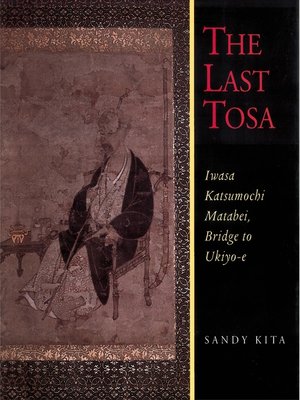
Sign up to save your library
With an OverDrive account, you can save your favorite libraries for at-a-glance information about availability. Find out more about OverDrive accounts.
Find this title in Libby, the library reading app by OverDrive.



Search for a digital library with this title
Title found at these libraries:
| Library Name | Distance |
|---|---|
| Loading... |
Iwasa Katsumochi Matabei (1578-1650) is one of the most controversial figures in Japanese art history. For more than half a century, historians have argued over Matabei's role in Japanese art: Was he, as he asserted, "The Last Tosa" (the school of painters who specialized in Yamato-e, a kind of classical courtly painting) or, as others characterized him, "The Founder of Ukiyo-e," the style of painting associated with the urban commoner class. In this highly original and convincing study, Matabei emerges as both—an artist in whose work can be seen elements of both Yamato-e and Ukiyo-e.
Extending its analysis beyond the individual artist, The Last Tosa examines the trends and artistic developments of a transitional period and makes heretofore unexamined connections between the world of the aristocrat and the merchant as well as the two artistic schools that reflected their tastes. It addresses these larger issues by identifying Matabei as a member of a social group known as machishu. Excerpts from noblemen's diaries, an investigation of the etymology of machishu, and an analysis of art by its members, indicate that machishu included both commoners and gentry, thus revealing a rich tradition of egalitarianism—an important departure from the conventionally held belief that seventeenth-century Japan's urban society was rigidly stratified.
The Last Tosa provides an exhaustive study of Matabei's paintings, including all his important works and key attributions. Translations of all documents available on Matabei are given, in particular his travel diary, a unique source, the only known example of such a text by a seventeeth-century classical painter. With its fusion of cultural history with political, social, and economic history, this sophisticated study will appeal to not only art historians, but also to students of history, anthropology, and culture studies interested in questions of group identity and the political uses of culture.







